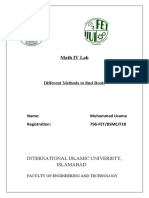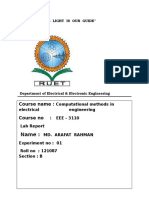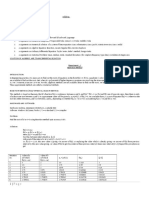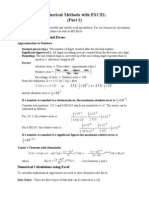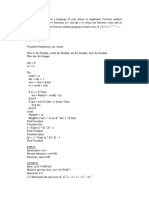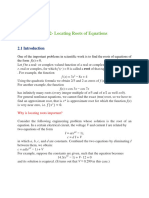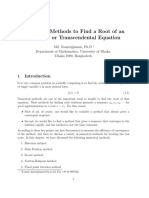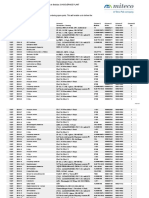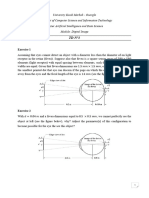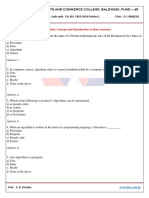0% found this document useful (0 votes)
163 views38 pagesNumerical Methods With Applications: Tutorial 2
The document discusses using Taylor series expansion (TSE) and Newton-Raphson method to find numerical solutions of equations. It provides an example of using TSE to evaluate a function f(x) = -3x^4 + 15x^3 + 24 at x = 1.2. The example calculates the Taylor series approximations and error estimates iteratively until the desired tolerance is reached. It also provides an example of using the Newton-Raphson method to find the root of the equation cos(x) - 3x + 1 = 0 by iteratively estimating new values of x until the error is below tolerance.
Uploaded by
Anonymous PYUokcCCopyright
© © All Rights Reserved
We take content rights seriously. If you suspect this is your content, claim it here.
Available Formats
Download as PPTX, PDF, TXT or read online on Scribd
0% found this document useful (0 votes)
163 views38 pagesNumerical Methods With Applications: Tutorial 2
The document discusses using Taylor series expansion (TSE) and Newton-Raphson method to find numerical solutions of equations. It provides an example of using TSE to evaluate a function f(x) = -3x^4 + 15x^3 + 24 at x = 1.2. The example calculates the Taylor series approximations and error estimates iteratively until the desired tolerance is reached. It also provides an example of using the Newton-Raphson method to find the root of the equation cos(x) - 3x + 1 = 0 by iteratively estimating new values of x until the error is below tolerance.
Uploaded by
Anonymous PYUokcCCopyright
© © All Rights Reserved
We take content rights seriously. If you suspect this is your content, claim it here.
Available Formats
Download as PPTX, PDF, TXT or read online on Scribd
/ 38
